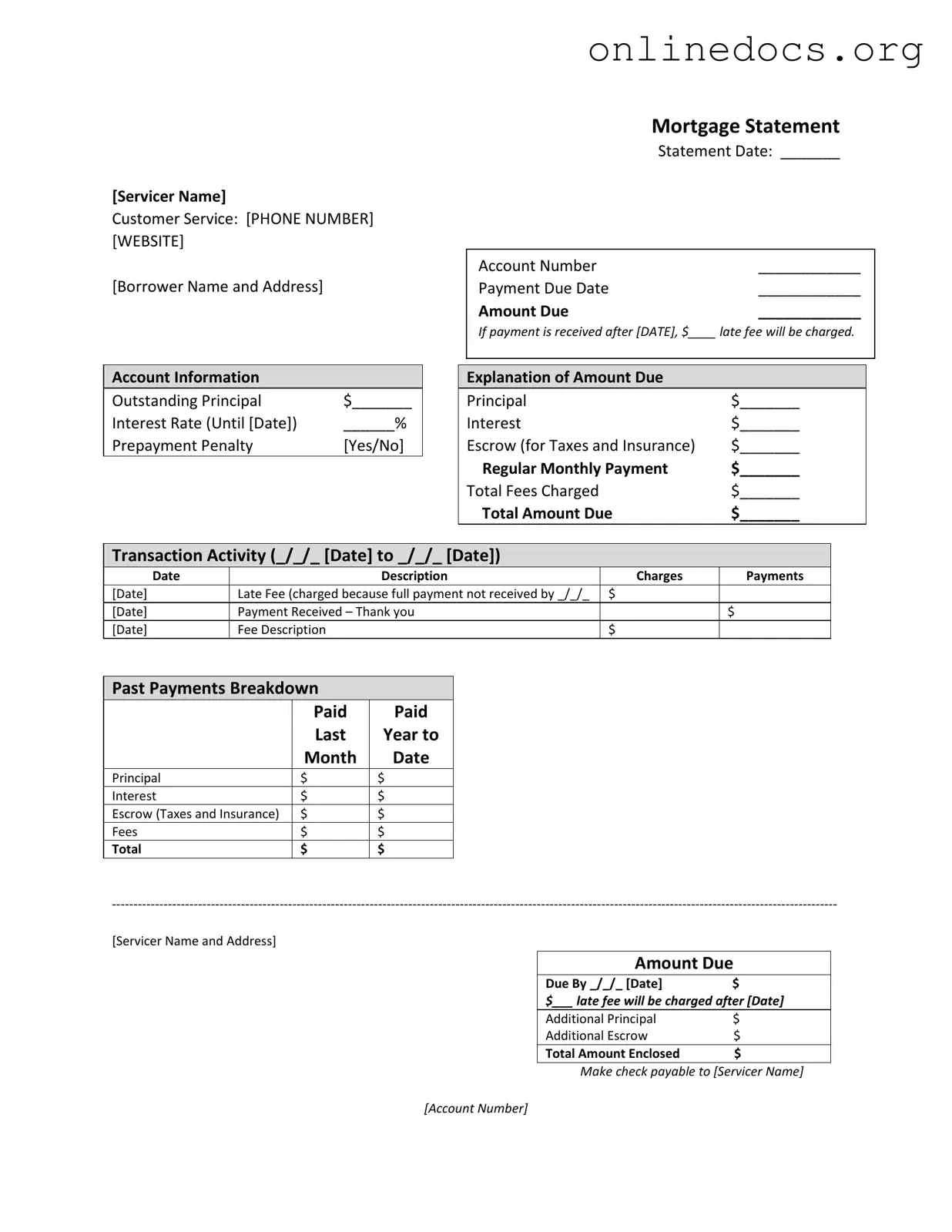The first document similar to a Mortgage Statement is a Billing Statement. A Billing Statement provides a summary of charges, payments, and outstanding balances for various types of accounts, such as credit cards or utility services. Like the Mortgage Statement, it includes essential details such as account numbers, due dates, and amounts owed. Both documents serve to inform the recipient about their financial obligations and prompt timely payments to avoid penalties.
Another comparable document is the Loan Statement. A Loan Statement outlines the status of a personal or business loan, detailing the principal balance, interest rate, and payment history. Similar to a Mortgage Statement, it breaks down the amount due into principal, interest, and any applicable fees. Both documents aim to keep borrowers informed about their repayment progress and any potential late fees for missed payments.
The Credit Card Statement also shares similarities with the Mortgage Statement. It provides a summary of transactions, outstanding balances, and minimum payment amounts due. Both documents include due dates and may specify late fees for overdue payments. The Credit Card Statement helps consumers manage their credit usage, just as the Mortgage Statement assists homeowners in managing their mortgage payments.
A Utility Bill can also be compared to a Mortgage Statement. It details charges for services such as electricity, water, or gas, including due dates and payment amounts. Both documents typically feature a breakdown of costs and may indicate penalties for late payments. Utility Bills, like Mortgage Statements, serve as reminders for consumers to stay current on their financial responsibilities.
The Property Tax Statement is another document that shares characteristics with a Mortgage Statement. It provides information about property taxes owed, including due dates and payment options. Similar to the Mortgage Statement, it may include penalties for late payments and a breakdown of the total amount due. Both documents are crucial for homeowners to understand their financial obligations related to property ownership.
The Rental Application form serves a crucial role in the rental process, but it can also be helpful to understand other financial documents like the Mortgage Statement. Both require careful attention to detail. For those interested in ensuring all paperwork is filled out accurately, resources such as legalformspdf.com offer valuable templates and guidelines to assist in completing rental applications efficiently while avoiding common pitfalls that can delay the rental process.
Finally, an Insurance Premium Statement can be likened to a Mortgage Statement. This document outlines the premium amounts due for various types of insurance, such as homeowner's or auto insurance. It includes payment due dates and may detail any late fees for missed payments. Both statements serve to keep individuals informed about their financial commitments, ensuring they remain compliant with their payment schedules.
